Cabbage Ambat
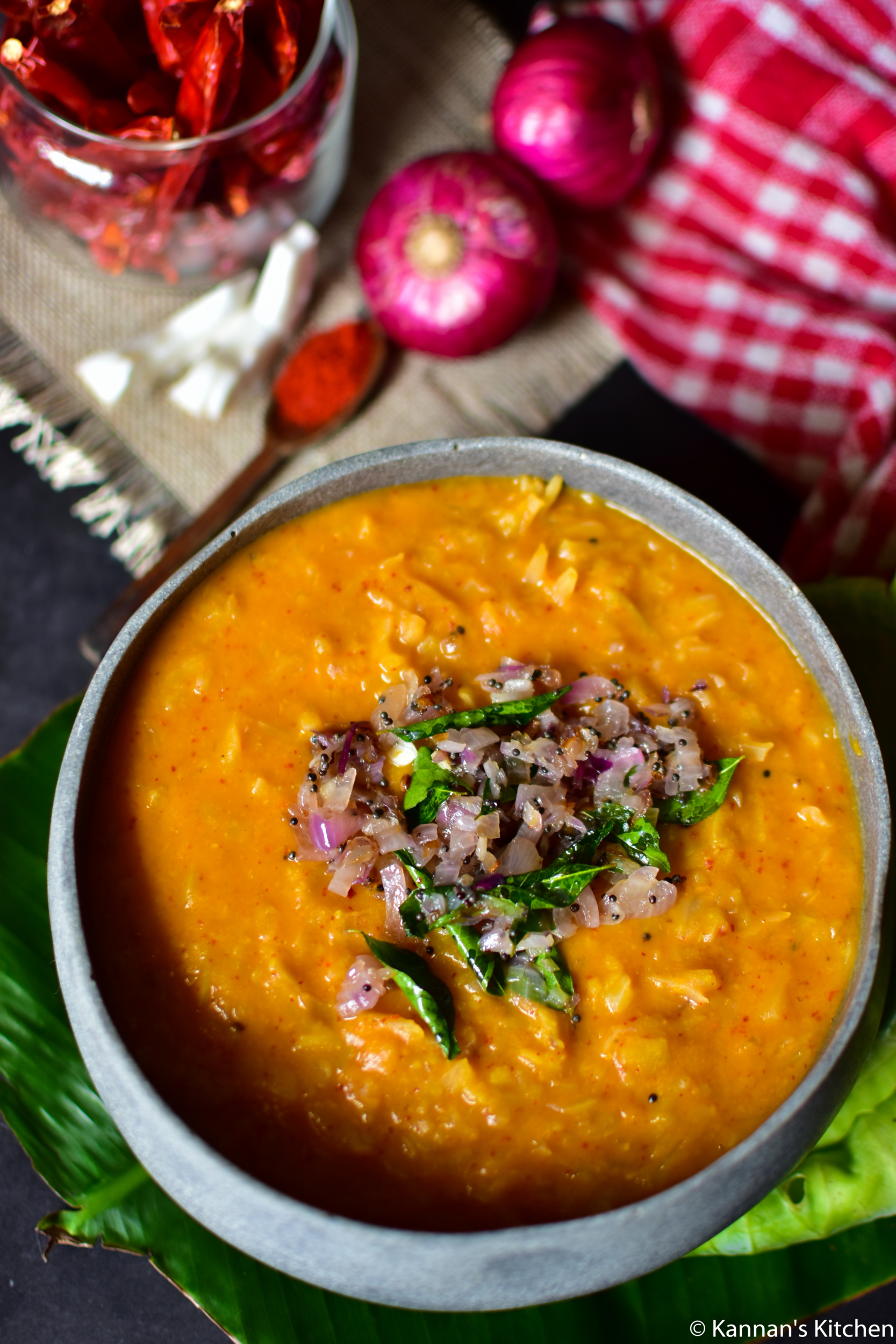
Ambat is a dish that originates from the Konkan region of India. It is typically a coconut and red chilli based curry containing toor dal and a veggie, topped with fried onions. It is somewhat similar to ‘Kootu’ which is a native recipe of Tamil Nadu and Kerala, where the similarities are with the use of coconut and chillies for the masala paste, however the difference is in the use of tamarind and fried onions as ‘Kootu’ typically does not contain these ingredients.
This dish was pretty unknown in our family until my mom learnt it from one of her friends and introduced in our lunch menu. This is now one of our staple dishes for lunch. This recipe has a subtle south-Indian twist to the classic Konkani recipe, as it uses some urad dal in the masala paste and use of the curry leaves in a coconut oil based tadka, but it just tastes perfect and I feel enhances the flavour too.
Ambat can be cooked with any of the available veggies, however this recipe is about Cabbage and it pairs beautifully with the toor dal and the fried onions. In other words, I would say this is a unique variation of cabbage kootu with some added flavours (tang from tamarind) and crunch of sweet fried onions.
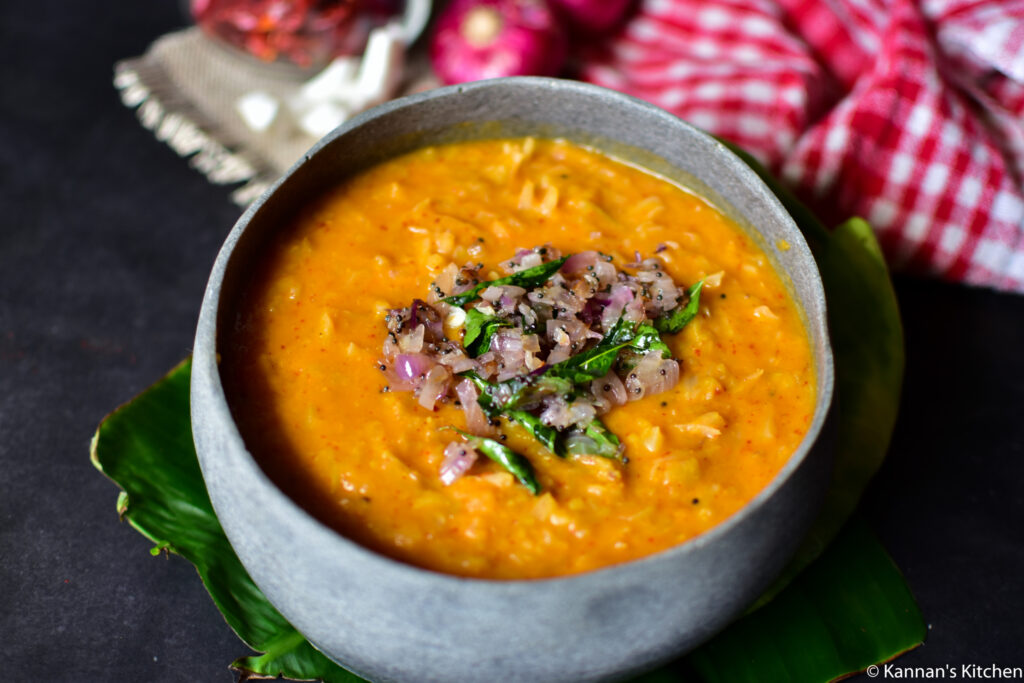
I am particularly glad to share this recipe with you all, as it is one of the signature dishes of my mom and whoever has tasted this, has definitely asked for the recipe!
Serving Suggestion
Cabbage Ambat pairs beautifully with plain white rice and a dollop of ghee, however can also be equally enjoyed with chapati or parathas.
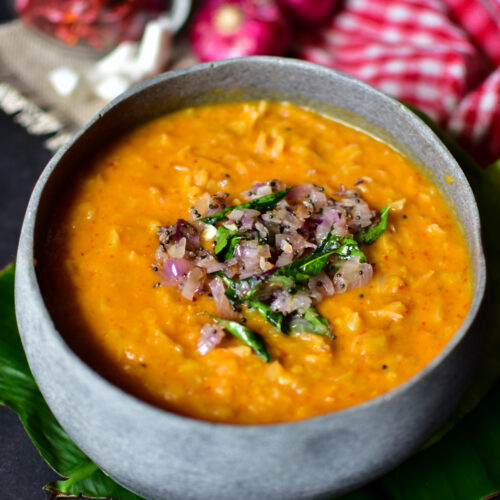
Cabbage Ambat
Ingredients
- 300 gms Cabbage Finely Chopped (roughly half medium cabbage)
- 0.5 cup Toor Dal
- 1 large Onion Finely Chopped
- 2 sprigs Curry leaves
- 3 tbsp Coconut Oil
- 2 tsp Sunflower Oil
- 1 tsp Mustard Seeds
- 0.25 tsp Asafoetida
- 0.5 tsp Turmeric Powder
- Salt To taste
For Masala Paste
- 1 tsp Sunflower Oil
- 0.25 cup Coconut Grated or sliced
- 4 nos Byadgi Red Chillies
- 0.25 tsp Fenugreek or Methi Seeds
- 1 tsp Raw Rice
- 1 pinch Tamarind Roughly 1 inch
- 1 tbsp Whole Urad Dal White
Instructions
- Pressure cook the toor dal with some turmeric powder till it is fully done. Slightly mash the dal and keep aside
- Heat one teaspoon oil in a pan and add whole urad dal and methi seeds and roast on medium flame till it is slightly changes colour. Add all the remaining ingredients listed in the masala paste section and roast on medium flame till it slightly changes colour and turns aromatic. Cool this mixture.
- Blend the roasted masala ingredients to a fine powder
- In a kadai, heat 2 teaspoon oil and saute the chopped cabbage for 2 to 3 minutes. Then add some salt and turmeric powder and water and cook till the cabbage is almost done
- Now add asafoetida and ground masala and cook for 2 to 3 minutes.
- Add the cooked toor dal and some water and salt and let it come to a boil. Cook for around 7 to 8 minutes. You could adjust the consistency as per your liking, but tastes good when it is slightly thick
- In a separate pan, heat 3 tablespoon coconut oil and add mustard seeds. Once it starts sputtering, add 2 sprigs of curry leaves and finely chopped onion. Cook the onions till they slightly turn golden in colour. Mix this to the gravy and serve hot with rice or roti
Notes
- It is important to cook the cabbage in some oil before adding some water for further cooking. This will ensure that the cabbage does not give a slightly unpleasant smell while cooking in water.
- Use Byadgi red chillies for getting a brilliant red colour gravy, however if you do not have Byadgi chillies, you could use other varieties of the red chillies. But please make note to reduce the quantity as Byadgi chillies listed in recipe are mildly spiced.
- You could increase of the amount of tamarind if you like the curry slightly tangy.
- Mash the toor dal well after cooking to get a homogenous consistency
- The raw rice used in the masala paste helps in the thickening of the gravy.
- The roasted onions give this dish it’s distinct taste, however you could skip this and just temper with coconut oil and curry leaves if you do not consume onions.
If you liked this recipe or you have tried it, please share your comments, feedback or suggestions below.

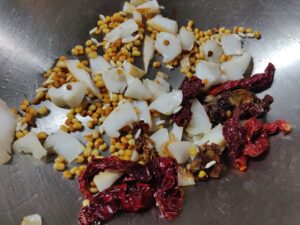
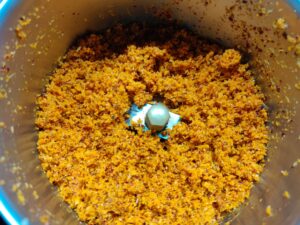
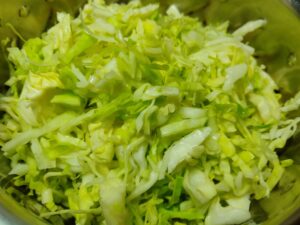
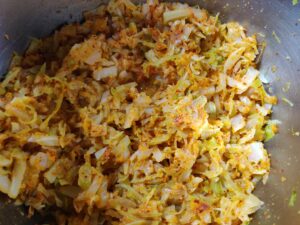
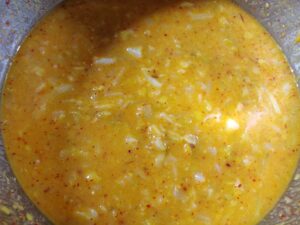

Hi kannan,
We don’t add urad & curry leaves in our cabbage ambat. It’s just coconut, red chilli, methi & Tamarind base with onion seasoning. In our amchi dishes this is the base for every dishes, just that for few we add methi for few replace methi with other ingredient depending on what the dish is.
Hello,
Yes, true. As I mentioned in my recipe, this is a slightly modified version of Ambat with South-Indian influence which my mom used to make. It tastes delicious either ways.
Thanks
Kannan
Best ambat recipe!